Fact or Fiction? The Woman Who Claims To Be The Long Lost Anastasia Romanov
The Romanovs were the last royal dynasty of Russia and there are many legends about this legendary family. Apparently, the family was assassinated by the Bolsheviks in 1918, during the Russian Revolution.
However, rumor has it that the youngest Romanov, Anastasia survived. Between the murder case finally being solved and a woman resurfacing claiming to be Anastasia, we might finally have some answers on what happened to the prolific Romanovs back in 1918.
300 Years in Power
The Romanovs were Russia’s royal family starting in 1613 and ruled for almost 300 years. Ivan the Terrible was the very first tsar of Russia. When he married Anastasia Romanova Zakharyina-Yurieva, they became the most powerful couple in Russia.

Source: Nikolay Bogatov/ Wikimedia Commons
Throughout their hundreds of years in power, the Romanovs instigated many wars and reforms. They made Russia a significant world power over the 3 centuries they were in power. But the last dynasty of the family is where our story begins.
The Final Rule
In 1894, Nicholas II of Russia married Princess Alix of Hesse and they became the Tsar and Tsarina of Russia. Princess Alix adopted the name Alexandra Feodorovna to honor her husband and the Russian Orthodox Church.
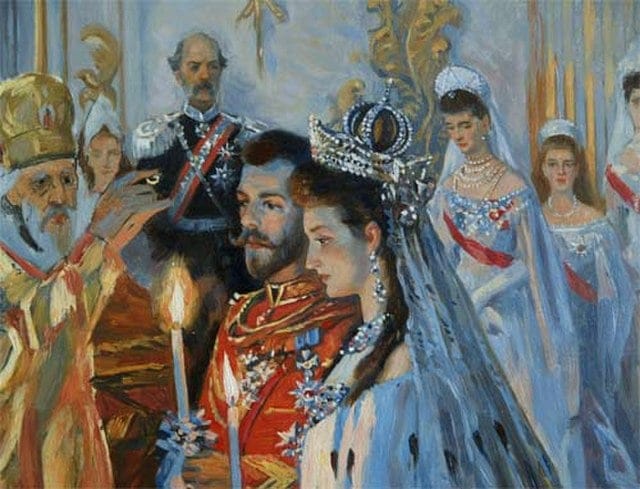
Source: Wikimedia Commons
The couple came from royal European families. Nicholas was the son of Alexander III and Maria Feodorovna. Alexandra was the granddaughter of Queen Victoria of the United Kingdom of Great Britain and Ireland.
The Children of the Romanovs
They had 4 daughters named Olga, Tatiana, Maria, and Anastasia, and 1 son named Alexie. Alexei would be the heir to the throne. However, the family raised their children humbly, regardless of their wealth and status.
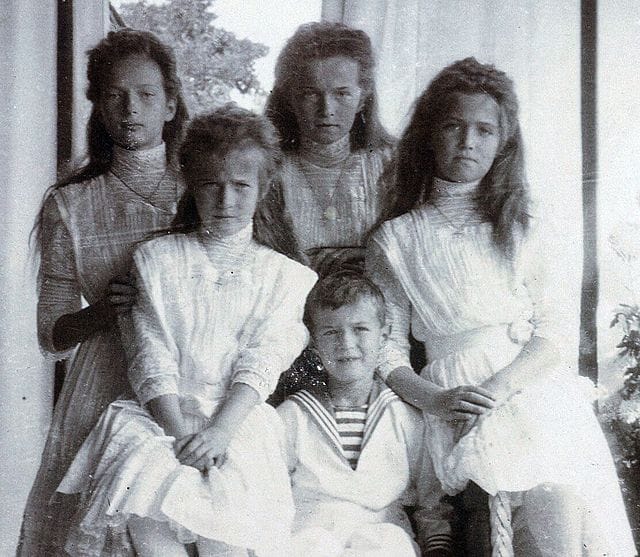
Source: Romanov Family/ Wikimedia Commons
They slept on coats, had cold baths, and were not referred to by their royal titles. Olga and Tatiana shared a bedroom while Maria and Anastasia shared one. They were commonly referred to as “OTMA”, a moniker for their names.
Anastasia Nikolaevna, the Grand Duchess of Russia
The family was initially disappointed to have a fourth daughter. When she was born in 1901, they had hoped for a son who would succeed his father, Nicholas as Emperor of the Russian Empire.
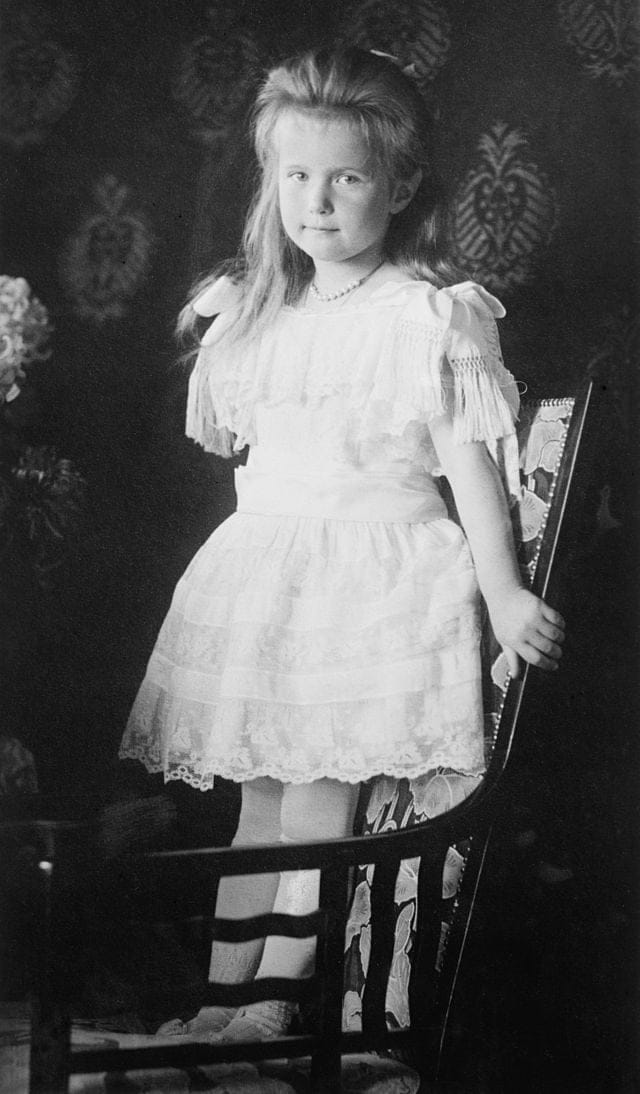
Source: Bain News Service/ Wikimedia Commons
However, they quickly found out that their daughter Anastasia was a truly remarkable child. She stood out from her sibling for many reasons. She had blonde hair and blue eyes which was a stark difference from his brothers and sisters.
The Prankster
Anastasia could be quite the prankster. She was known to play practical jokes on others, but she was regarded as very “gifted and bright” despite her silliness. However, she preferred her little tricks to her schooling and academia.
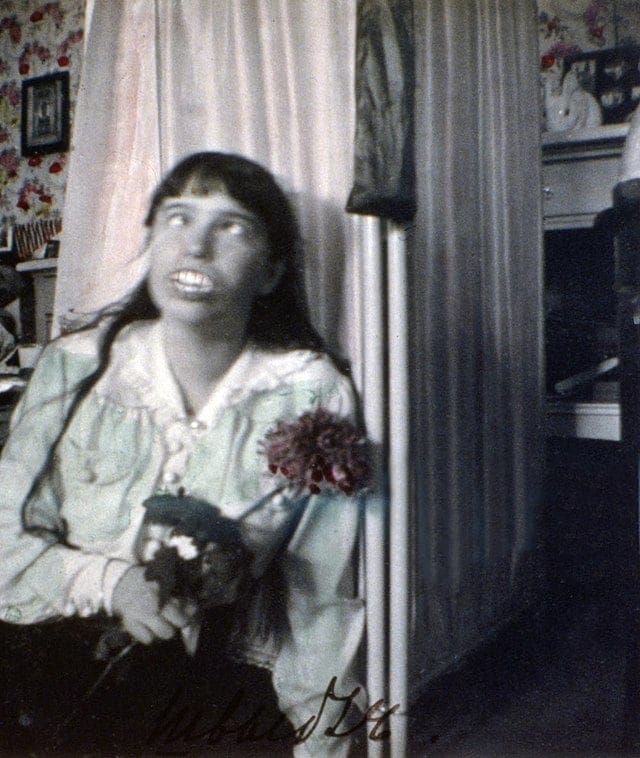
Source: Wikimedia Commons
Not everyone appreciated her tricks and thought of it more as bullying than anything else. A distant relative named Princess Nina Georgievna described Anastasia as “nasty to the point of being evil”. Others described her as a “prodigy of naughtiness”.
The Revolution Creeps Closer
As the whispers of the Revolution started to grow louder, the Romanovs were in danger of losing much of their wealth and power. Between military defeats, the family’s commitment to autocratic rule, and the suppression of political opposition, Tsar Nicholas was losing public support quickly.

Source: wikimedia commons
Protests started to emerge all over Saint Petersburg due to the lack of food provided by the royal family In 1917, the people’s dissatisfaction with the monarchy was realized and the Tsar was removed from the throne shortly afterward.
The Romanov Family's Capture
The Romanovs were placed under house arrest at the Alexander Palace after Tsar Nicholas stepped down from the throne during the revolution. However, a few months later they were forcibly removed and relocated to Tobolsk. This was right outside of Siberia.

Source: Ninara/ Wikimedia Commons
Shortly after, Bolsheviks’ Red Army took control of the government, which sparked the October Revolution. The Romanovs were sent to yet another city to hide. Their home had been thoroughly trashed.
The Romanovs’ Life at the Ipatiev House
The children of the Romanov family were able to amuse themselves during their time in custody in the Ipatiev House. They put on shows for the whole family to enjoy, and the girls took on sewing projects like hiding royal jewels in their clothes so their captors couldn’t locate them.

Source: Wikimedia Commons
As time passed, the Romanovs were increasingly despondent about their predicament. Though they were living in a mansion, they hated being cooped up inside. Sadly, things were only going to get worse from that point on.
Invasion of the White Army
During this time, Russia was wholly engulfed in a civil war. When the Bolsheviks saw that the White Army, which was opposing them, was rapidly moving on Yekaterinburg, where the Romanovs were being detained, they found themselves in a difficult situation.
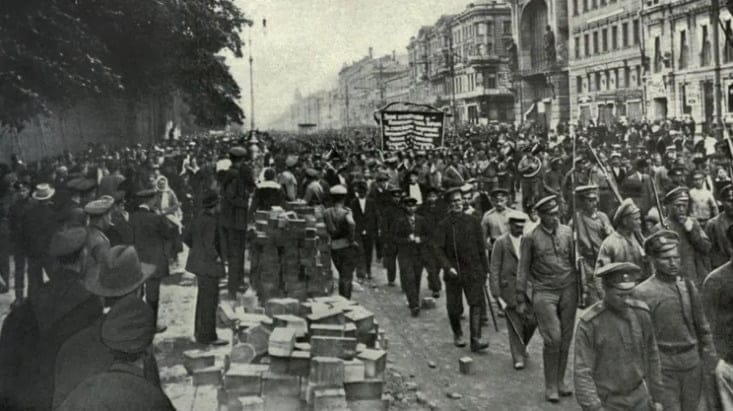
Source: videnskab.dk
The White Army, which was larger and better-equipped than the Bolsheviks’ Red Army, was almost certain to beat them. This would allow the Romanovs to be liberated and potentially return to power. As a result, they made the decision to do the unthinkable.
The End of the Romanovs
On July 17, 1918, Yakov Yurovsky, the head of the Bolsheviks’ secret police, roused up the Romanov family and their attendants and ordered them to get dressed fast to be relocated to a more secure place. To put an end to reports that they had escaped, they took a group photograph in the basement of the Ipatiev House.
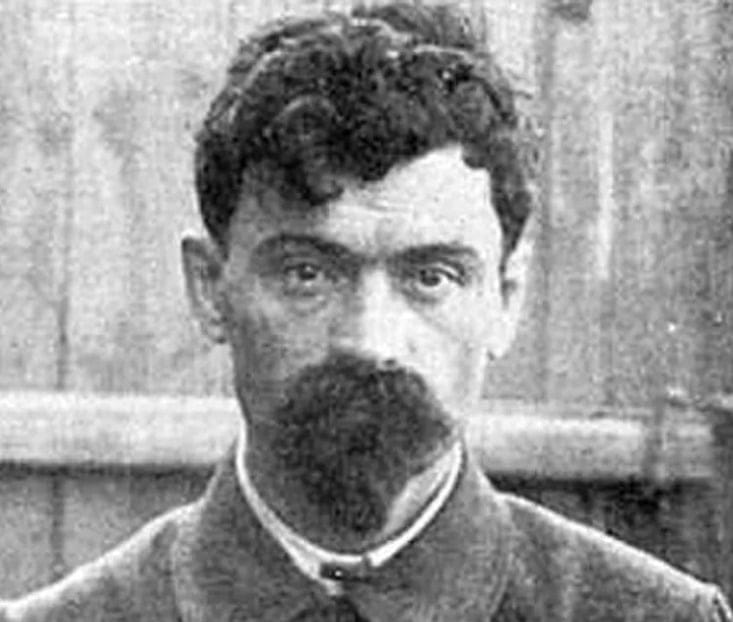
Source: Wikimedia Commons
After a few moments, Yurovsky entered the chamber and told the Tsar that he and his family were about to meet their demise by gunfire. Within 20 minutes, the entire family had perished… or so everyone believed.
The Repercussions
When the White Army landed in Yekaterinburg, they discovered that the Romanovs had vanished. The Bolsheviks admitted publicly to slaying Tsar Nicholas but claimed they had relocated the remainder of the family to an unidentified secure location.
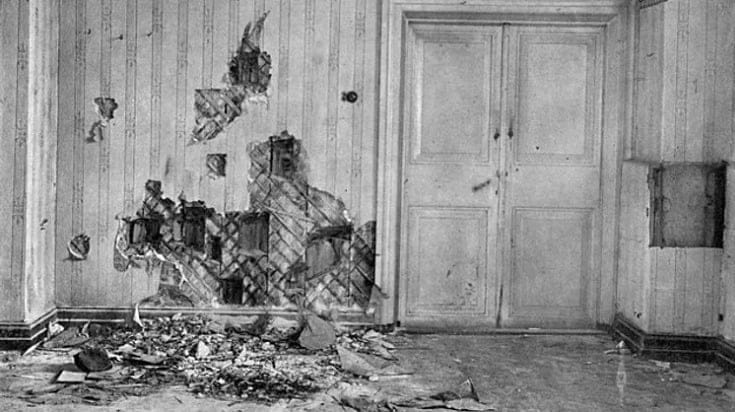
Source: Wikimedia Commons
The populace began to doubt whether the Bolsheviks had spared any lives that night. However, no remains had been found yet, so it appeared plausible that someone had managed to make it out alive. They had no idea that the truth would take a century to emerge! The terrible scene in the Ipatiev House is depicted in this image.
Is It Possible That a Romanov Daughter Survived?
A rumor began to circulate that one of the Romanov girls had indeed managed to leave the basement room alive on that horrific July night. Between 1918 and 1928, a slew of women came forward pretending to be Anastasia.
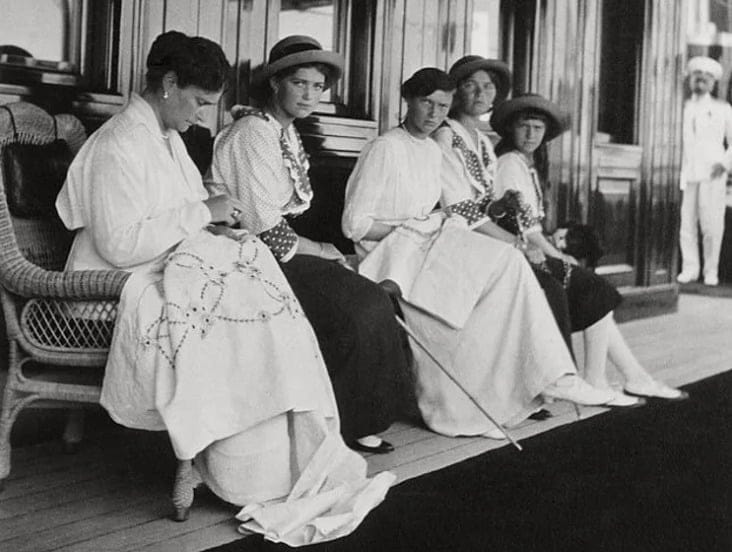
Source: Wikimedia Commons
Everyone knew that Anastasia was the heiress to the opulent Romanov wealth, which explains why so many women wanted to be her. The majority of these claims were immediately found to be untrue, but one woman, who became known as “Anna Anderson,” turned the case on its head completely.
The Unidentified Woman
An unidentified young woman was committed to a mental institution in Germany in 1920, and she refused to divulge her identity. For six months, she could not talk or identify herself, gaining the nickname “Ms. Unknown”. Then, for the first time in six months, she began to speak – with a Russian accent.
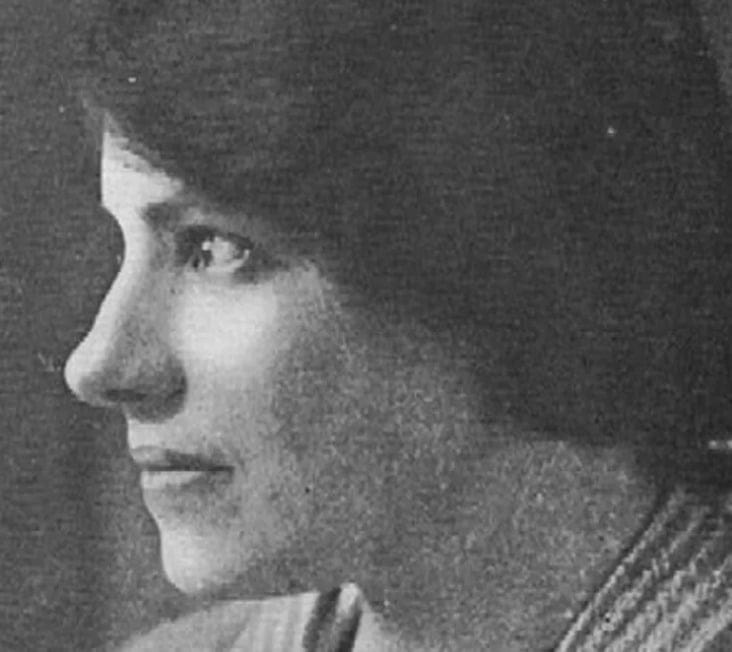
Source: Wikimedia Commons
A fellow patient at the hospital, a woman named Clara Peuthert, felt that Ms. Unknown could be one of the long-lost Romanov daughters. She speculated that it may have been Tatiana, who had been reported missing. So, Clara went out to discover the identity of Ms. Unknown as soon as she was released from the hospital.
Could Ms. Unknown Be Tatiana?
Clara arranged for Ms. Unknown to meet with a number of Russian exiles who had previously had contact with the Romanov family. Nearly every one of them was sure that Ms. Unknown was definitely a Romanov daughter.

Source: Wikimedia Commons
However, Ms. Unknown hardly spoke to any of the guests and never confirmed or denied her identity. Visitors quickly realized that she resembled Tatiana Romanov so well that they couldn’t believe she wasn’t the real deal. Olga and Tatiana are shown in this photograph.
The Objections Begin to Flood in
It was just a matter of time until someone objected to the claim that Ms. Unknown was the daughter of a Russian Tsar. Baroness Sophie Buxhoeveden, a former lady-in-waiting to the Tsarina, was the first to express her thoughts on the issue.
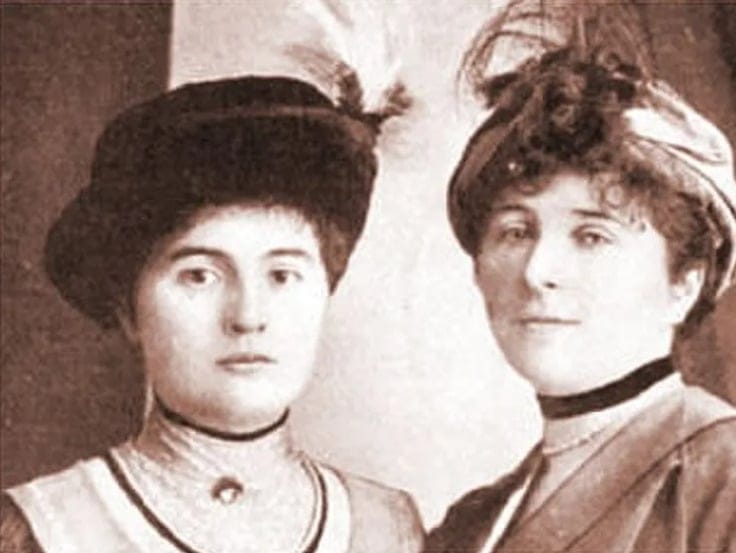
Source: Wikimedia Commons
As soon as the Baroness laid eyes on Ms. Unknown, she saw that while she resembled Tatiana, she was significantly shorter. “I never said I was Tatiana,” remarked Ms. Unknown, who had rarely talked to any of the guests presented to her up until that point.
Anna Anderson
After Ms. Unknown made such a vague comment, it was speculated that she was, in fact, still a Romanov daughter, but not Tatiana. Following that, Captain Nicholas von Schwabe, who worked as the Dowager Empress’ bodyguard, paid a visit to the mental hospital.
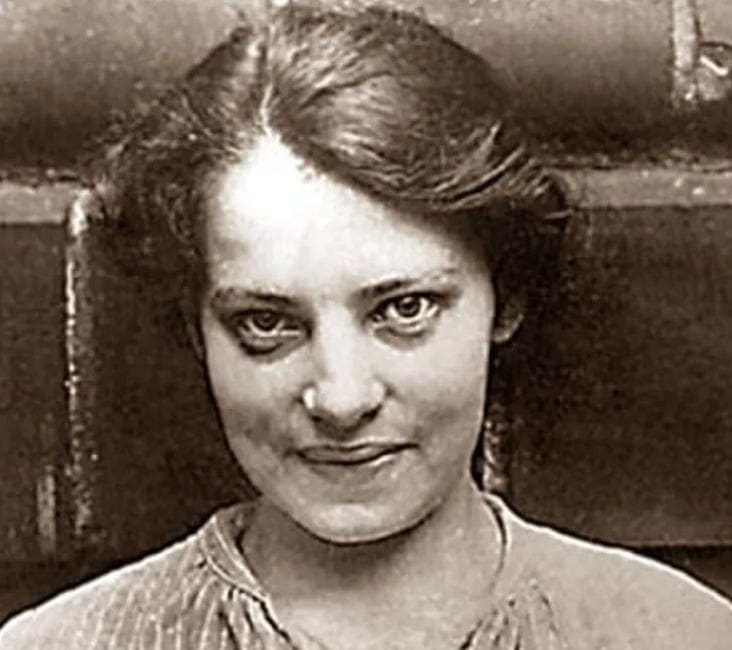
Source: Wikimedia Commons
He handed Ms. Unknown a list of the Romanov girls’ names, and she began to cross off every name on the list except for Anastasia’s. From that point on, Ms. Unknown was referred to as “Anna Anderson.”
Anna's Discharge from the Psychiatric Institution
It took two years for Anna Anderson to be discharged from the psychiatric hospital where she was first admitted, and that happened in 1922. People who were certain she was the long-lost Romanov daughter and those who disputed this story continued to interrogate her for years.
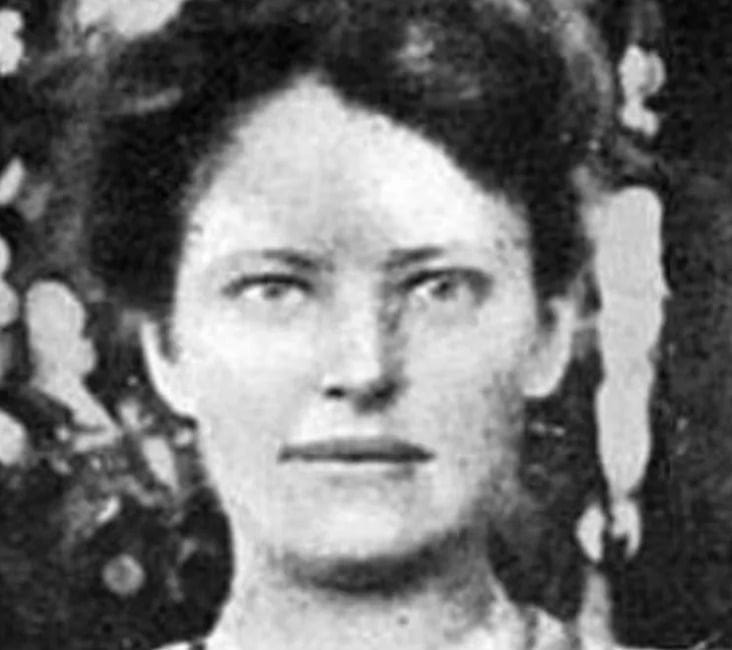
Source: Wikimedia Commons
She visited with House of Romanov’s extended relatives and mentioned facts that only the genuine Anastasia could have known. There was also a significant similarity in their physical appearance. However, the mystery was still unsolved.
Was It All A Ruse?
Anna Anderson would often refuse to interact with visitors, adding to the confusion. Captain von Schwabe once brought her a Bible with a passcode only a Romanov could decipher. In a frenzy of wrath, Anna tore the page to shreds.

Source: Wikimedia Commons
She also met with the Romanovs’ long-time acquaintance Zina Tolstoi. When Zina started playing a song on the piano that she had once played for the Romanov kids, Anna slumped on the couch in tears, and they grieved together. Could it be that recalling her early memories was too difficult for her? Or was it all a sham? After all, Anastasia was infamous for her childish pranks.
Princess Irene Visits Anna
Officer Franz Grünberg persuaded Princess Irene of Prussia to join him and Anna Anderson for dinner on another occasion. Anastasia’s aunt, Princess Irene, was sure to know if Anna was the genuine Anastasia. So Grünberg brought Princess Irene to Anna under a fictitious name to protect her identity.
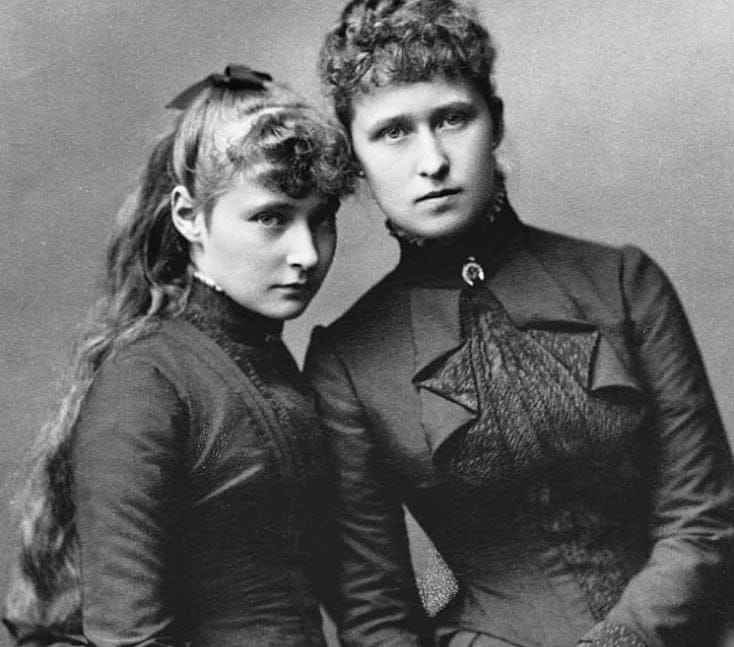
Source: Wikimedia Commons
Anna got up from the table and walked away, apparently enraged. Irene followed her, wondering whether she knew her, but ultimately decided Anna was not Anastasia. Anna later claimed she stormed out because her own aunt had tried to prove she was a fraud. Alexandra Feodorovna and Princess Irene are shown in the photograph above.
Gleb Botkin Meets Anna
Anna Anderson first encountered Gleb Botkin in 1927. Gleb was the son of Yevgeny Botkin, the Romanov household doctor. When Gleb and Anna first met, he was sure that Anna was the genuine Anastasia, and he rapidly became her most ardent advocate.

Source: Wikimedia Commons
Because of this, he sought the counsel of a New York City attorney, Edward Fallows. In order to have access to the Romanov family’s riches, she would need official recognition as Anastasia Romanov. The case would go on to be the longest in German history.
Physical and Psychological Evaluations
Forensic professionals evaluated Anna during the investigation to see if there were any parallels between her and Anastasia. They discovered that the two were remarkably identical, right down to Anastasia’s scar from mole removal. Dr. Otto Reche, a world-renowned anthropologist and criminologist, stated that “such coincidence between two human faces is not feasible unless they are the same person or identical twins.”
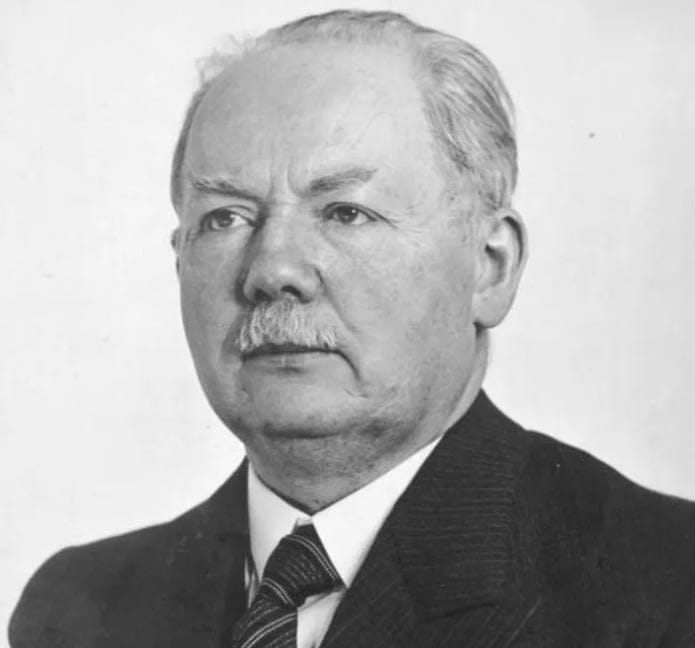
Source: Wikimedia Commons
Psychological tests were also conducted on Anna, and she was apparently deemed to be free of any mental health issues. “It seems impossible that her knowledge of numerous small details is based on anything but her own personal experience,” remarked another doctor, Dr. Lothar Nobel.
Memory Problems
However, a few people doubted that Anna Anderson was the real Anastasia for a variety of reasons. The actual Anastasia, for example, could communicate in English, French, and Russian, whereas Anna Anderson could barely communicate in any of those languages.
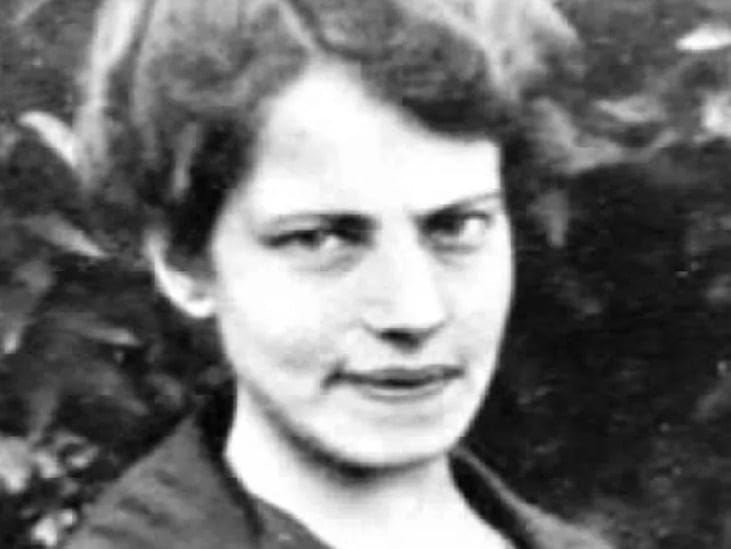
Source: YouTube/Jorge Leonardo Obeso
However, Anna and her supporters said that she had a persistent mental disorder that caused her memory to fail at times, countering that claim. Nevertheless, there was still a lot on the line, including the Romanov family wealth, so the battle went on.
Franziska Schanzkowska: Who Is She?
The Grand Duke of Hesse (Anastasia’s real-life uncle) doubted that Anna Anderson was the true Anastasia after a guy named Felix Schanzkowska claimed that Anna looked remarkably like his long-lost sister, Franziska. So, he recruited his own private investigator to figure out who Anna Anderson really was.
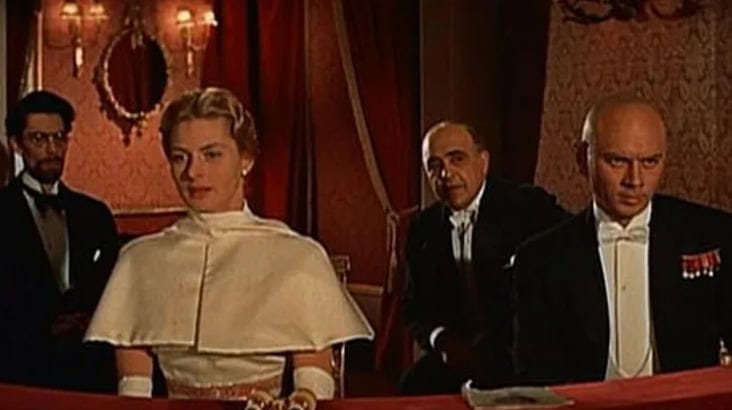
Source: Wikimedia Commons
According to the investigator, Anna was actually Franziska, a Polish factory worker who had a history of mental illness and went missing in 1920. By this time, the case had garnered widespread attention, inspiring a French play and a film titled Anastasia, starring Ingrid Bergman.
Case Solved
Anna Anderson’s case was officially closed in 1970 by a German court, claiming insufficient evidence on either side. “How shall I tell you who I am? In which way? Can you tell me that? Can you really prove to me who you are? It’s up to you whether or not you believe it. It doesn’t really matter,” Anna Anderson said in a 1978 interview.
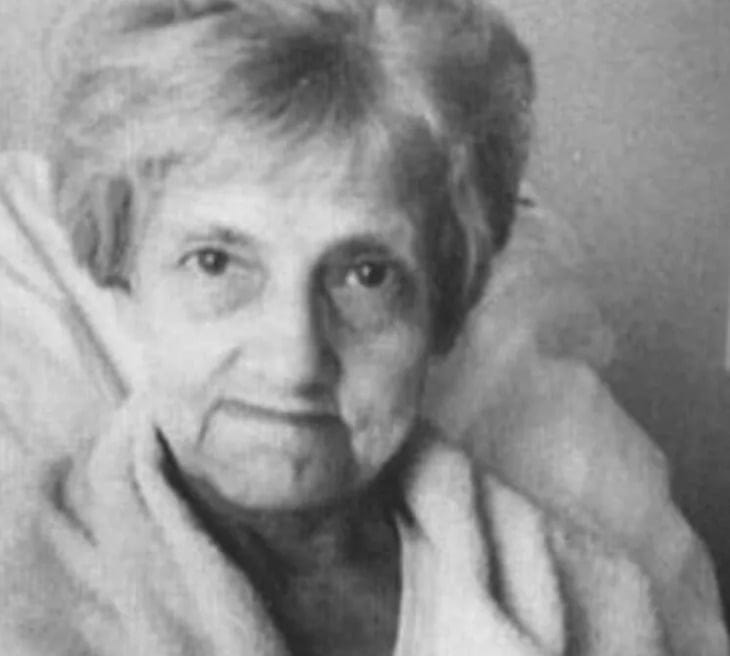
Source: Twitter/Rafael Poulain
Anna Anderson died of pneumonia in 1984 after having stuck to her claim of being the actual Anastasia Romanov throughout her life. In the end, the Duchess of Mecklenburg received the Romanov family’s riches.
An Unbelievable Discovery
Nobody knew where the Romanov family remains were, so for the longest time, no one could confirm or deny if the Bolsheviks had executed every member of the Romanov family. Eventually, a geologist named Alexander Avdonin heard reports of a probable Romanov tomb near the Yekaterinburg mansion. He went seeking it in 1979.
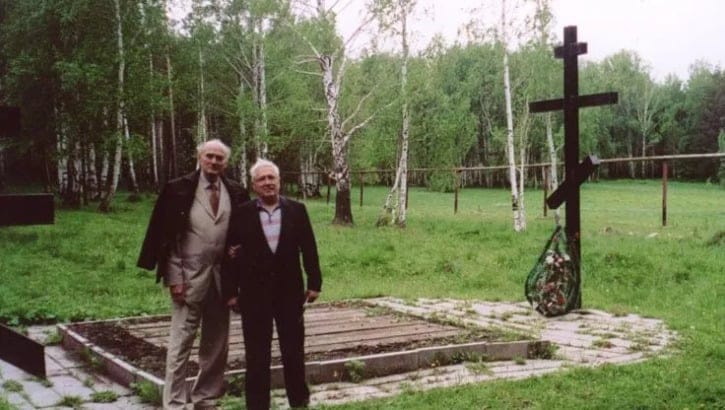
Source: Pinterest/Andrei Beanov
The bones of the lost royal family were discovered, which was both terrifying and magnificent. Alexei and one of the young girls, however, remained unaccounted for. Could this indicate they had survived after all? Before they could discover more, Avdonin and his crew had to return the bones to their burial site because they feared the Soviet government’s reaction.
The Note of Yurovsky
The Yurovsky Note was discovered in 1989, and it was a crucial piece of the puzzle. It revealed a few essential details concerning the fateful night of the Romanovs’ last day in a note penned by Yakov Yurovsky himself.

Source: Wikimedia Commons
The message stated that after the incident, the remains were concealed in a bonfire and then buried in a woodland mine. However, the mine turned out to be too shallow for the entire family, so they moved the bodies of Alexei and one of the family’s young daughters to a different spot nearby. The mystery was finally coming together!
The Completion of the Puzzle
After some time, the Russian government began to loosen its grip on the Romanov case, and a thorough analysis was conducted in 1991. Using DNA testing, Avdonin and his team were able to identify the remains of five members of the Romanov family.

Source: Wikimedia Commons
For this purpose, they compared their DNA to that of British nobility at the time, including Prince Philip, the grand-nephew of Tsarina Alexandra. But it wasn’t until 2007 that a forensics enthusiast named Sergei Plotnikov discovered the bones of the two lost children. He revealed to The Guardian, “it was evident that they didn’t die peacefully.”
Connecting the Pieces Using DNA Evidence
An investigation into Anna Anderson’s ancestry was carried out in 1994 to determine whether or not she was linked to the Romanovs. They tested a DNA sample that was taken from her intestines during a surgical procedure.
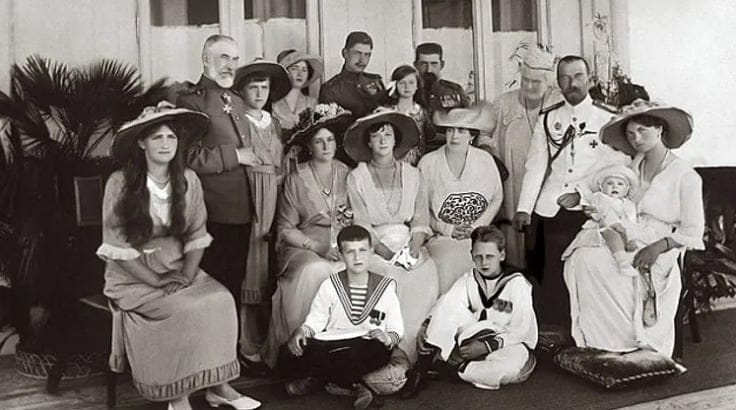
Source: Wikimedia Commons
Finally, they found that she was not linked to the Romanovs in any way. For the first time, researchers confirmed Anna Anderson’s identity after all these years by comparing her DNA to that of Karl Maucher, a grand-nephew of Franziska Schanzkowska.
The Russian Orthodox Church Condemns the Results
The Romanov family was buried in Saint Petersburg in 1998, except for Alexei and one of the daughters. Still, the Russian Orthodox Church refused to grant them full funeral rites, claiming that the Russian government was lying about the discoveries.
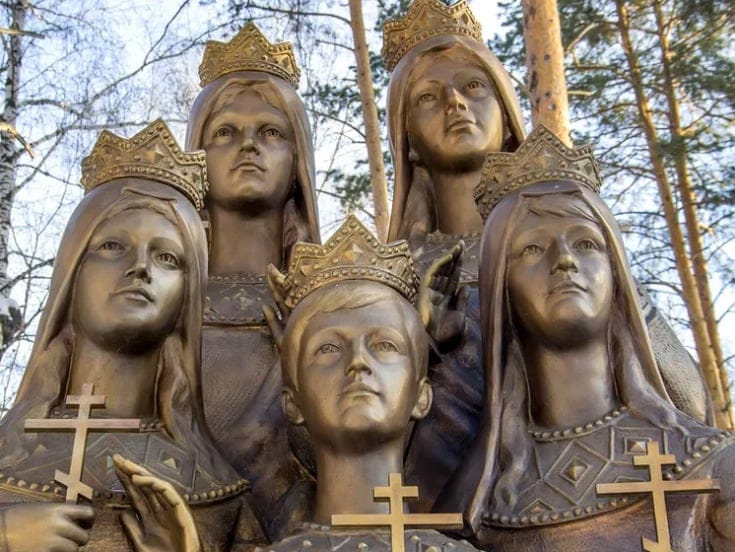
Source: tourradar.com
In 2000, the remains of the Romanov family were canonized, making them sacred relics. Sadly, politics and conspiracy theories have profoundly influenced the Church’s stance, making it difficult to predict if the entire family will ever be buried in the church.
An Endless Case (Sort of)
Using the most up-to-date DNA testing and comparing the DNA of Tsar Nicholas II to that of his father, Alexander III, and other Romanov family members, Russian investigators concluded in 2018 that the remains were indeed those of the Romanov family.
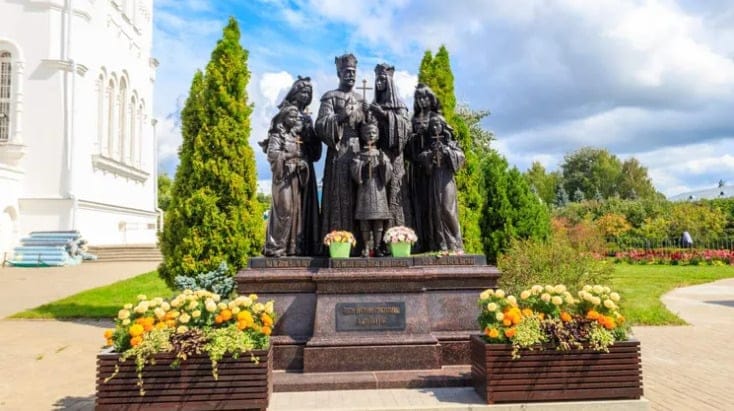
Source: facebook
Perhaps we will never know which of Alexei’s three daughters was buried with him at a separate site, far removed from the rest of his family. However, further investigation into the family members continues to this day. What we do know is that on that tragic night in 1918, the lives of the whole Romanov family and their servants were mercilessly taken, and no one survived.
